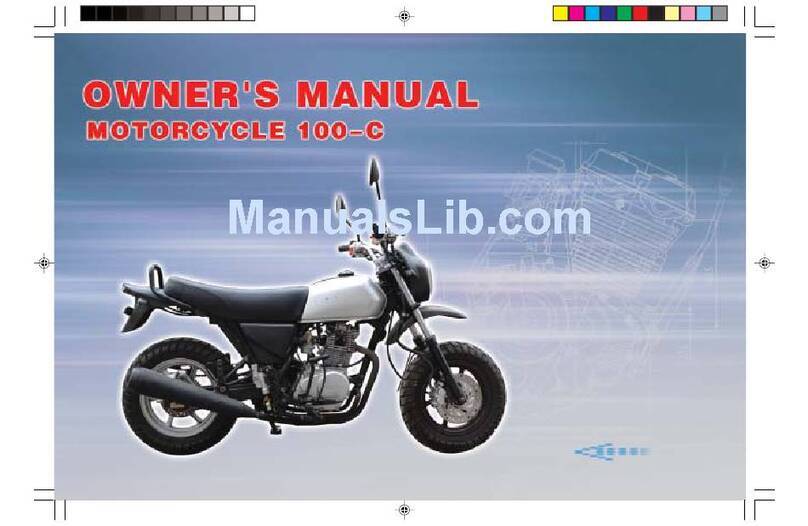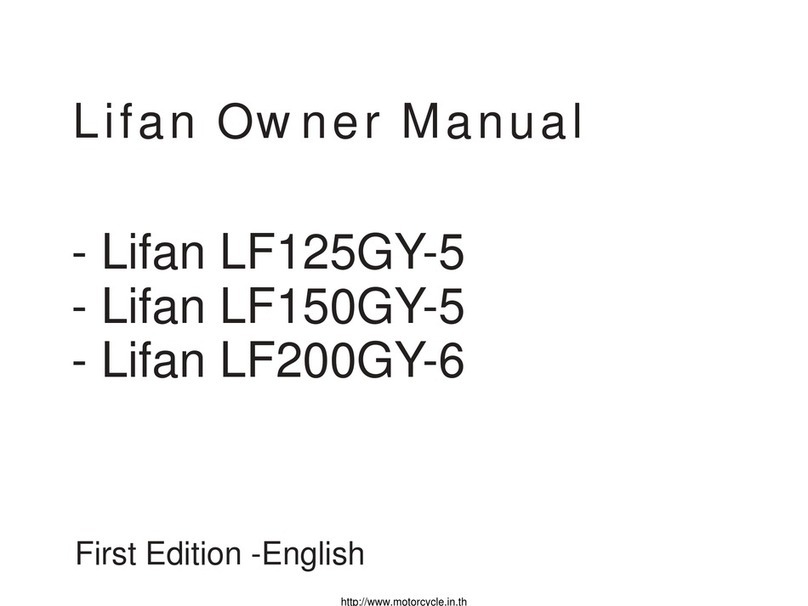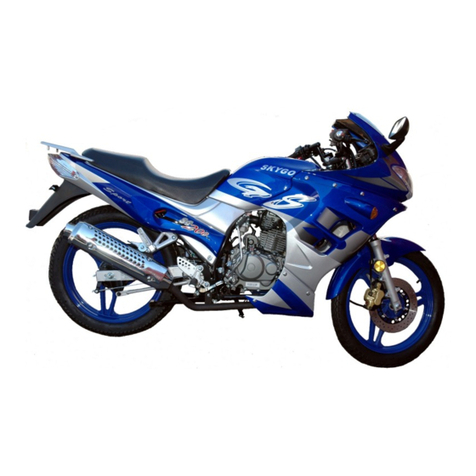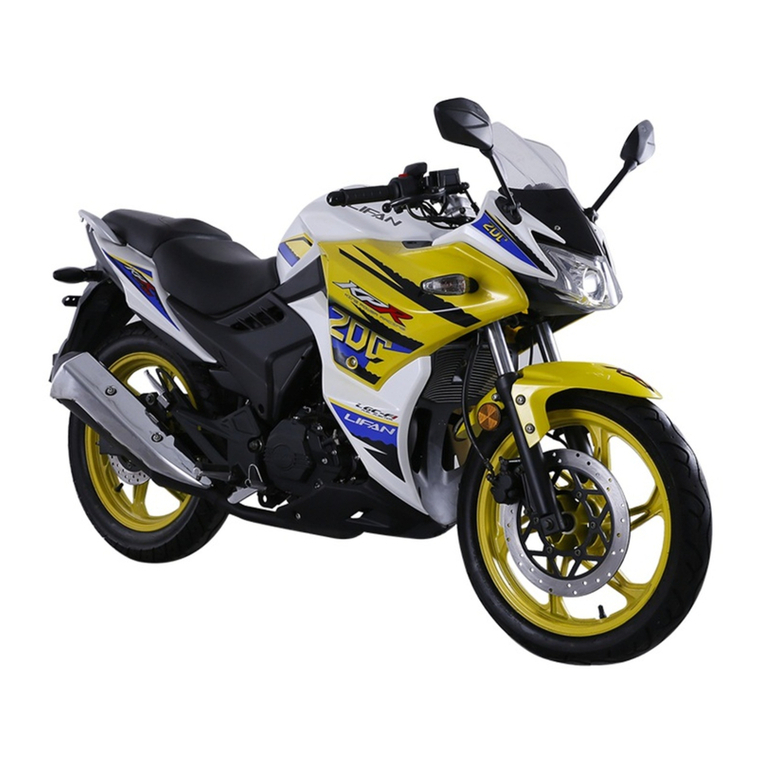
CONTENTS
MOTORCYCLE SAFE RIDING
Safe Riding Rules .............................................................................. 1
Protective Cloths .............................................................................. 1
Refitting .............................................................................................. 1
Loading .............................................................................................. 1
Accessories ........................................................................................ 1
GENERAL INFORMATION
Parts Location ................................................................................... 2
VIN Record ......................................................................................... 3
Fuel and Engine Oil (EP) ................................................................. 3
CONTROLLING PARTS
Meter and Indicators ......................................................................... 4
Ignition Switch and Steering Lock ................................................. 4
Right Handlebar Controls ................................................................ 4
Left Handlebar Controls ................................................................... 5
Choke Lever ....................................................................................... 5
Refueling and Cap ............................................................................. 5
Fuel Cock............................................................................................ 5
Gearshift Pedal .................................................................................. 6
Rear Brake Pedal ................................................................................ 6
Rear Shock Absorber ........................................................................ 6
Stands ................................................................................................. 6
Principle of Fuel Evaporating Systerm (EP) .................................. 7
OPERATION GUIDE
Pre-ride Inspection............................................................................ 7
Starting the Engine ........................................................................... 7
Breaking-in ........................................................................................ 8
Riding ................................................................................................. 8
Braking and Parking ......................................................................... 8
MAINTENANCE
Tool Kit ............................................................................................... 9
Maintenance Schedule ...................................................................... 9
Engine Oil (EP) ................................................................................... 10
Coolant ............................................................................................... 10
Servicing of Cooling System ............................................................ 11
Clear away Carbon Deposit (EP) ....................................................... 11
Spark Plug (EP)................................................................................. 11
Air Cleaner (EP) ................................................................................ 11
Valve Clearance .................................................................................. 12
Exhaust Muffler .................................................................................. 12
3-Way Catalytic Converter (EP) ........................................................ 12
Fuel Filter ........................................................................................... 13
Operation of Throttle ........................................................................ 13
Idle Speed of Carburetor (EP) ......................................................... 13
Check Leaks along Air Supply (EP)............................................... 13
Clutch ................................................................................................. 13
Drive Chain ........................................................................................ 13
Front Brake ......................................................................................... 14
Rear Brake ........................................................................................... 15
How to Check and Replace Brake Pad ............................................ 15
Front/Rear Shock Absorber and Suspension ................................. 15
Tyre ...................................................................................................... 15
Front Wheel ....................................................................................... 16
Rear Wheel ......................................................................................... 16
Fuse ..................................................................................................... 16
Battery (EP) ....................................................................................... 16
TROUBLESHOOTING AND STORAGE
Troubleshooting................................................................................ 17
Cleaning and Storage ........................................................................ 17
Removal from Storage ........................................................................ 17
Anti-fall-over Device (Optional) .................................................... 17
Motorcycle Alarm (Optional) .......................................................... 18
ELECTRIC DIAGRAM ......................................................................... 19
SPECIFICATIONS .................................................................................. 20
LF 150-10B(ENGLISH)A.p65 2012-4-23, 9:333

































